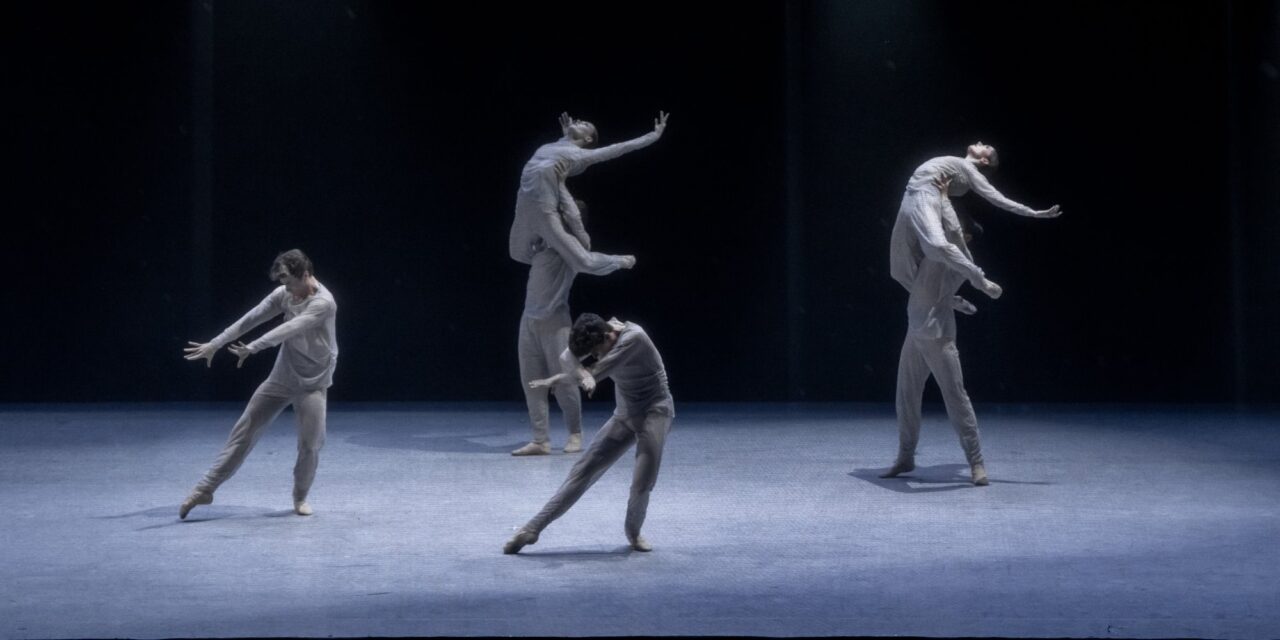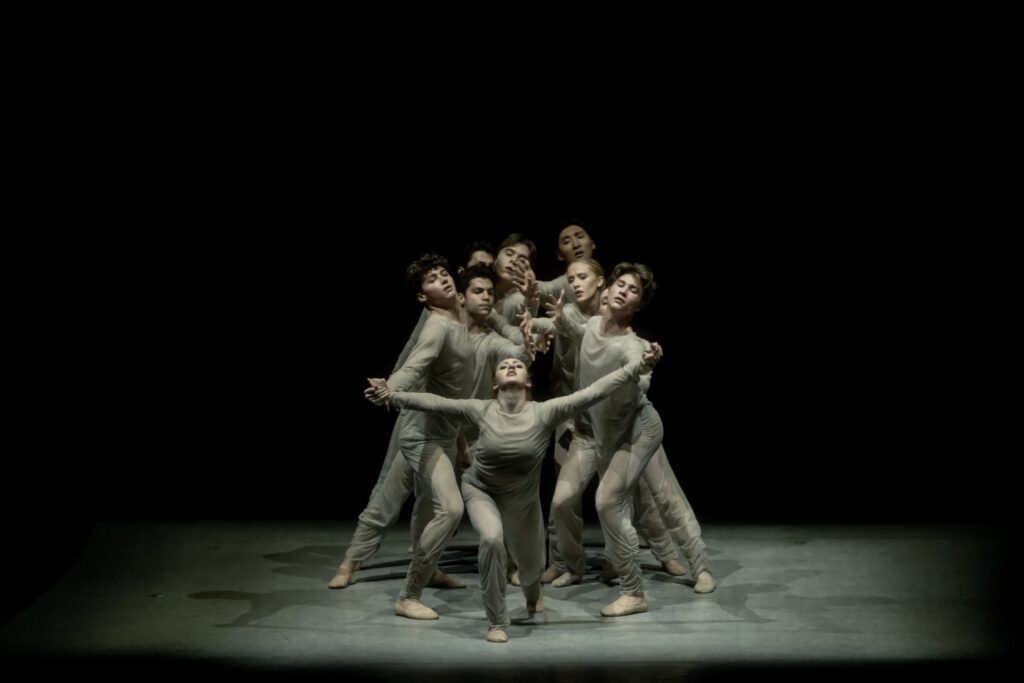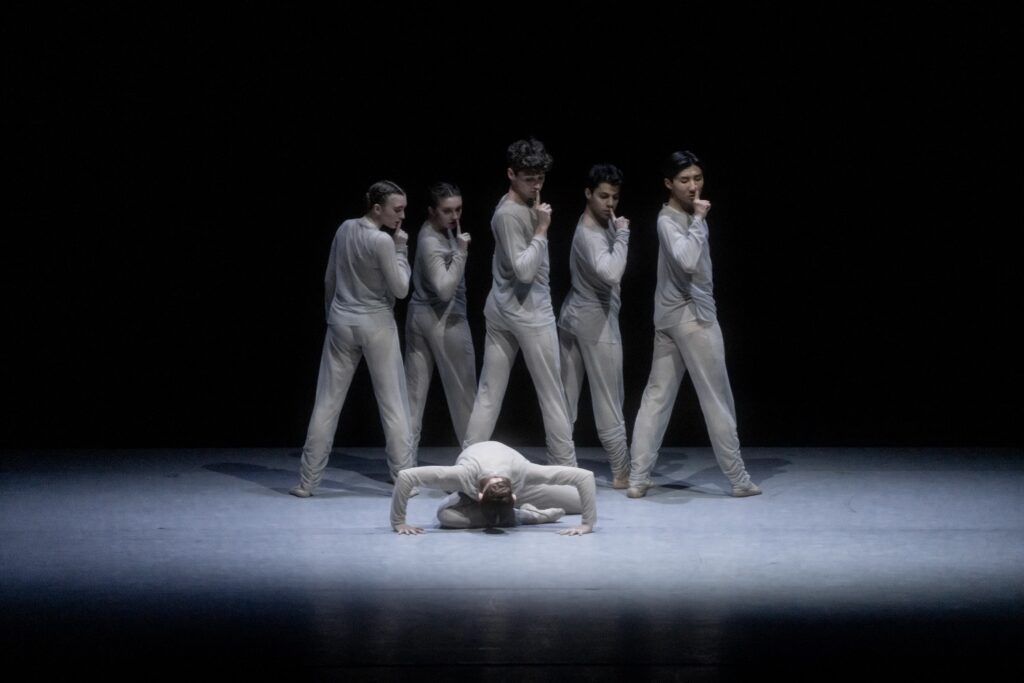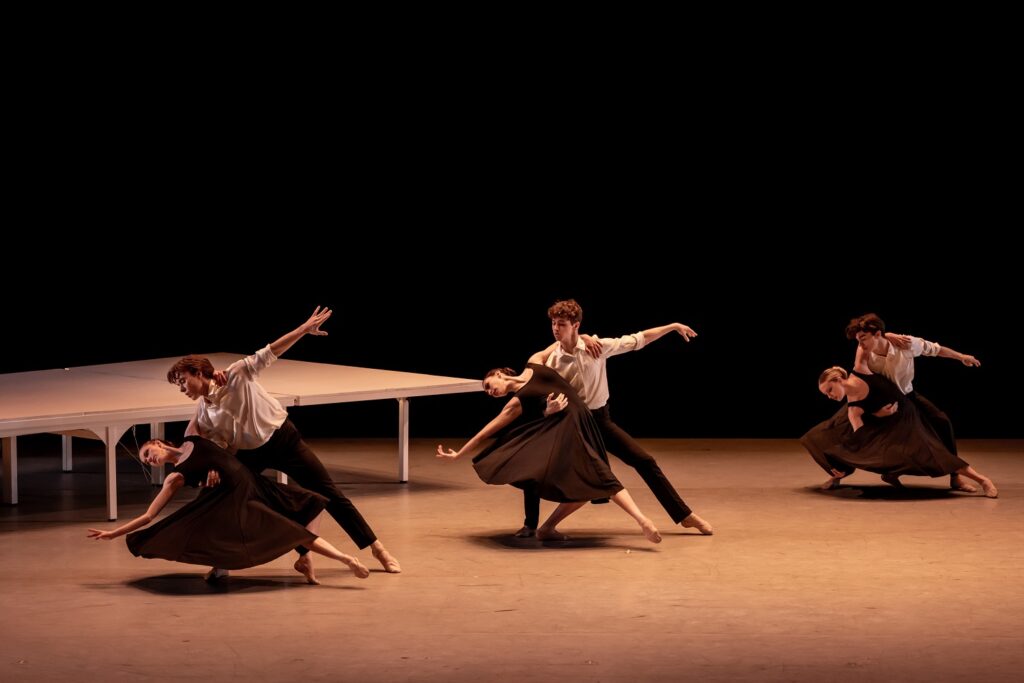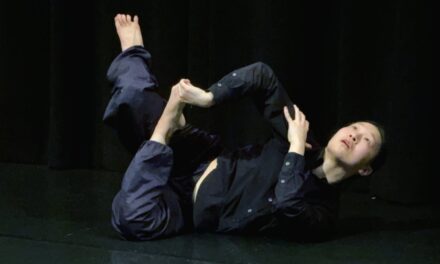A spotlight hovers over the stage, moving from side to side as dancers dodge and slide away from the light. It’s antithetical to the expectations of a stage performance, but the superficial faux pas is purposeful. They’re running in the darkness. They want to stay hidden.
In LA Ballet’s restaging of Melissa Barak’s “Memoryhouse” at The Wallis, dancers unearth vignettes of the Holocaust. The work, which premiered in 2023, comes back to LA in time for the 80th anniversary of the end of the Holocaust. Set to Max Richter’s album of the same name, the ballet pulls on themes of distress, communal support, discretion, fear and loss. “Memoryhouse” holds a new weight just two years later. On Jan. 20, the nation watched as tech billionaire Elon Musk did the Nazi salute at Donald Trump’s inauguration. Following the signal, Trump pushed out a series of executive orders within three weeks that hinted at a new form of ethnic cleansing carried out by the U.S. Immigration and Customs Enforcement, targeting Latino immigrants (and, at times, U.S. citizens). It has been clear that this tirade has less to do with political ethics and more to do with power and inciting fear amongst brown communities.
As the dancers swerved around the spotlight, I recalled the videos on social media I saw before the show which showed undocumented immigrants fleeing their jobs. We never see it directly, we see the aftermath: empty fields, empty classrooms, and quiet markets in predominantly Latino neighborhoods. “Memoryhouse” offers a peek into the action in the shadows outside the spotlight and away from the camera lens.
In the theater, it is hard to look away.
The section in the ballet continues with the group of dancers — Avia Gelfer-Mundl, Abigail Gross, Cleo Taneja, Shintaro Akana, John Dekle and Marco Ramirez — moving quickly and quietly in the darkness, shuffling on their tiptoes to the back corner of the stage. They plant their feet and turn to the audience. “Shh,” they say with their index finger to their lips.
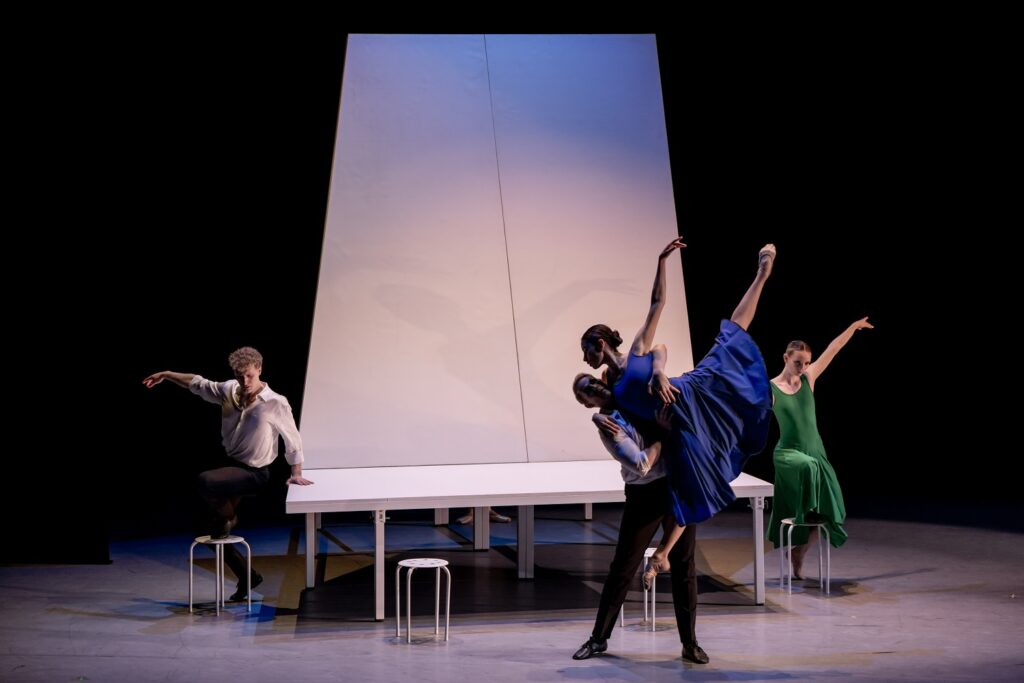
Los Angeles Ballet – Julianne Kinasiewicz (in blue) and Evan Swenson in “Memoryhouse” by Melissa Barak – Photo © Cheryl Mann.
“Memoryhouse” inventively splits Richter’s music into vignettes, keeping a soft throughline with the help of poignant imagery, including birds and light. The first act is primarily performed in front of a screen where projections add to the choreography, whether it be a building with windows or lamp posts leading to the back corner. The collaboration between lighting designer Nathan Scheuer and media designer Sebastian Peschiera brings these moments to life. In a breathtaking section, the lamp posts descending diagonally across the screen are rained on by musical notes. As the scene transitions, the lamp posts move forward until they create what seems to resemble a fence, referencing the ones surrounding concentration camps. The music notes land on the fence and the lines alter into a music staff. These music notes transform into birds flying away.
The moment is haunting and sets the scene for a duet between Cesar Ramirez-Castellano and Jacob Soltero. They move in unison, mirroring each other. There is a clear line of division they cannot cross — a fence — that restricts their physical connection. The choreography is soft yet strong. Their limbs swing and flutter in every direction but never at each other. The most they can do is touch palms. The reality of disconnection settles in.
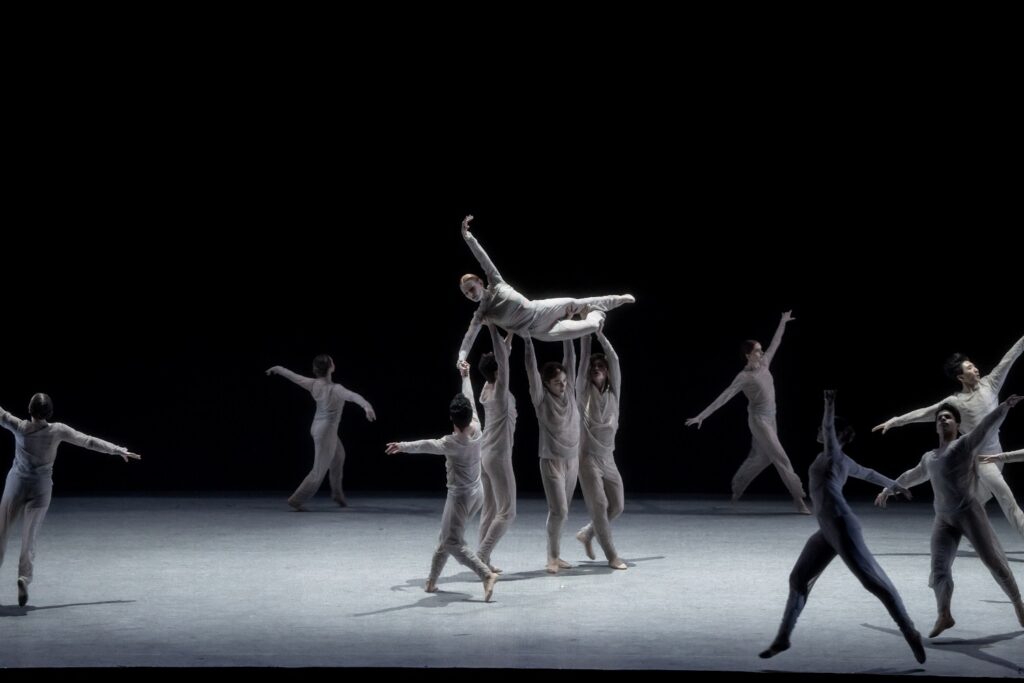
Los Angeles Ballet – Lilly Fife (above) and ensemble in “Memoryhouse” by Melissa Barak – Photo © Cheryl Mann.
Barak’s choreography often diverges from traditional balletic movements. At one point, a group of dancers run in place but bend their limbs in unexpected directions. Their arms swing down towards their center and their feet pivot outwards. The final image is unique and adds to the ferocity of their run. In another section, six dancers slide down a ramp, pulling one another back up in an effort to avoid the imminent bottom. Here, bodies contort and crawl. These moments differentiate themselves from traditional balletic steps. Barak’s innovative approach to movement emphasizes the narrative, serving it what it needs to pull at the audience’s heartstrings.
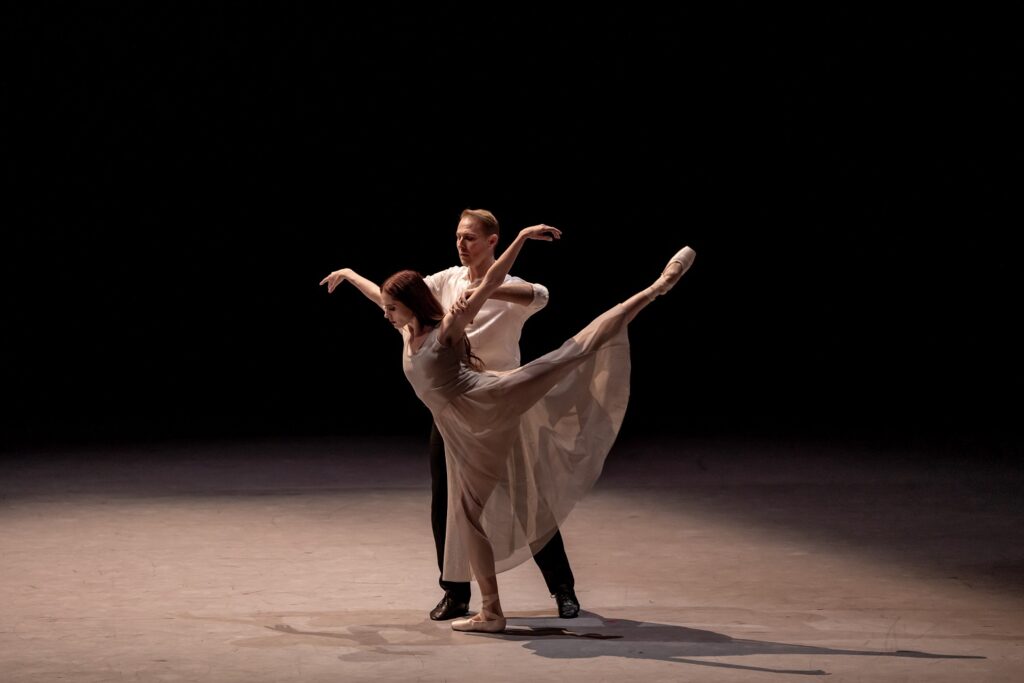
Los Angeles Ballet – Paige Wilkey and Evan Swenson in “Memoryhouse” by Melissa Barak – Photo © Cheryl Mann.
The abstraction crumbles and “Memoryhouse” offers direct reflections on moments of the Holocaust. In “Arbenita (11 Years),” a man (Evan Swenson) mourns the ghost of a lost loved one (Paige Wilkey). They perform a technically challenging duet that depicts the strength of connection. Here, Wilkey shines with her grace and control. Later, a synagogue goes up in flames. Jonas Tutaj grounds himself in a solo that balances fear and calmness.
The ballet concludes with a subtle duet behind a screen. The performance is cast in a brown hue reminiscent of an old television. There are no challenging ballet steps here. It is domestic. They clean the table and go about their day as usual. This epilogue reminds us that these atrocities were not that long ago. It could even happen again.
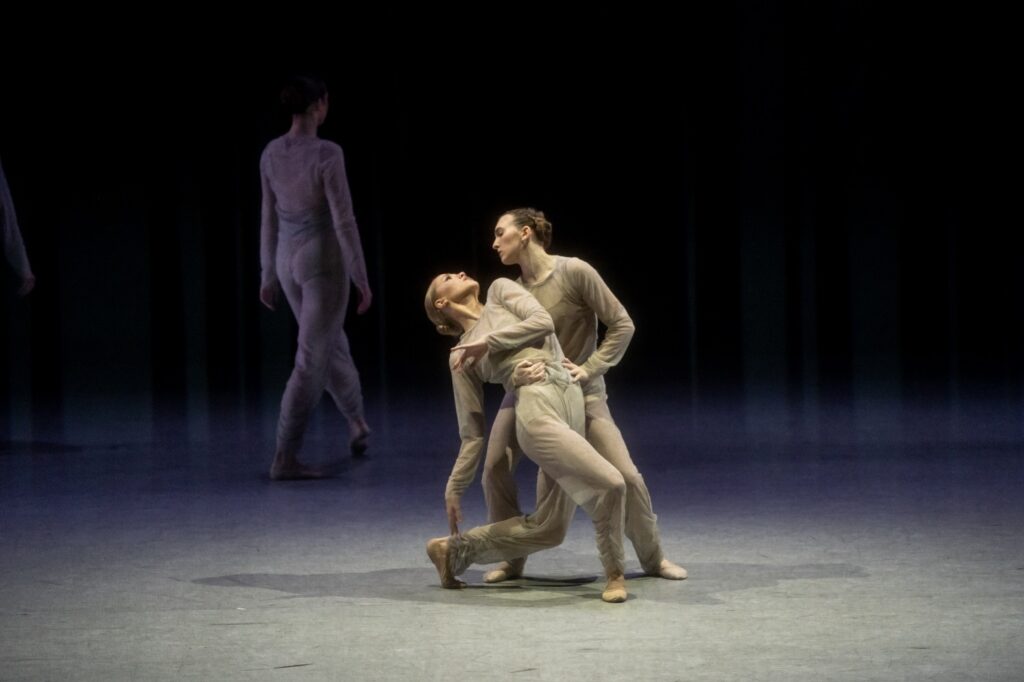
Los Angeles Ballet – Poppy Coleman and Abigail Gross in “Memoryhouse” by Melissa Barak – Photo © Cheryl Mann.
Three days after the performance, people gathered in downtown Los Angeles for a nationwide initiative, “A Day Without Immigrants,” where immigrants gathered on the 101 freeway to protest deportation and showcase the strength of the immigrant community in LA. This dance is different. They know how the story goes. This is a dance of resilience in front of the light for all to see.
To learn more about the Los Angeles Ballet, please visit their website.
To learn more about The Wallis, please visit their website.
Written by Steven Vargas for LA Dance Chronicle.
Featured image: Los Angeles Ballet ensemble in “Memoryhouse” by Melissa Barak – Photo © Cheryl Mann.

